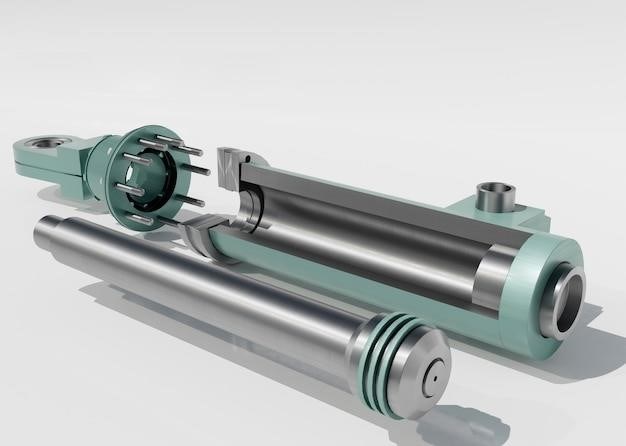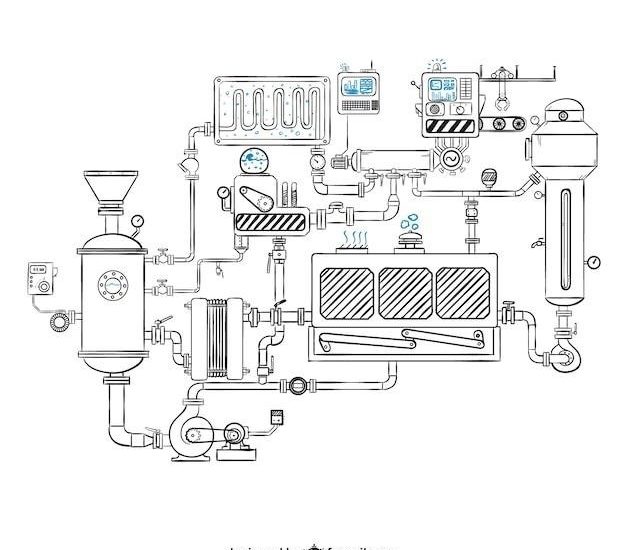4R70W Manual Valve Body⁚ A Comprehensive Guide
This guide provides a comprehensive overview of the 4R70W manual valve body, exploring its features, benefits, conversion process, performance enhancements, troubleshooting, popular kits, alternative options, safety considerations, and more. It will cover everything from the basics to advanced topics, empowering you to understand and utilize this powerful transmission component.
Introduction
The 4R70W transmission, a popular choice for performance enthusiasts, has a long history of reliability and adaptability. While the stock 4R70W features electronic control for smooth and efficient operation, the manual valve body offers a more direct and responsive driving experience, particularly for those seeking to maximize performance and control. This guide delves into the intricacies of the 4R70W manual valve body, covering its history, features, benefits, conversion process, and more. Whether you’re a seasoned mechanic or a curious enthusiast, this comprehensive resource will equip you with the knowledge to understand and leverage the potential of this powerful transmission modification.
What is a 4R70W Manual Valve Body?
At its core, the 4R70W manual valve body is a modified version of the stock electronic valve body found in the 4R70W automatic transmission. It eliminates the electronic control system, allowing for direct mechanical control of gear changes. This modification transforms the transmission from a computer-controlled automatic to a driver-controlled manual, offering enhanced control and responsiveness. The manual valve body replaces the stock unit, providing a direct connection between the shifter and the transmission’s hydraulic system. This eliminates the need for the transmission control unit (TCU), simplifying the transmission’s operation and providing a more direct and immediate shift feel.
History and Development
The 4R70W transmission, introduced by Ford in 1997, was a significant advancement over its predecessor, the AODE. It featured an electronically controlled valve body, offering enhanced shift smoothness and fuel efficiency. However, enthusiasts and performance-oriented drivers desired a greater level of control over gear changes, leading to the development of the manual valve body. The transition from automatic to manual control was driven by the demand for a more direct, responsive, and driver-adjustable shifting experience. Early manual valve body conversions often relied on aftermarket kits and modifications, but as the popularity of these conversions grew, specialized manufacturers emerged, offering dedicated kits and solutions for the 4R70W. This evolution led to a surge in performance upgrades and customization options for the 4R70W transmission, catering to a wider range of applications and driving styles.
Key Features and Benefits
A 4R70W manual valve body offers numerous advantages over its electronically controlled counterpart, providing greater control and performance capabilities. Key features include⁚
- Full Manual Control⁚ The manual valve body eliminates the computer’s involvement in shift selection, allowing the driver to manually control gear changes using a shifter or a custom setup. This direct control enhances driver engagement and provides precise shifting for specific driving situations.
- Improved Shift Response⁚ Manual valve bodies often feature upgraded components and valve designs, resulting in quicker and more responsive shifts. The elimination of electronic delays leads to faster gear changes, contributing to enhanced acceleration and overall driving performance.
- Higher Line Pressure⁚ By bypassing the electronic control, manual valve bodies can achieve higher line pressure, leading to tighter clutch engagement and reduced slippage. Increased line pressure translates into improved power transfer and reduced wear on transmission components.
- Customization Options⁚ The manual valve body opens a world of customization possibilities. Drivers can fine-tune shift points, pressure settings, and other parameters to precisely match their vehicle and driving style. This level of customization allows for optimized performance and tailored drivability.
These features make the 4R70W manual valve body a popular choice for performance applications, drag racing, street rods, and other scenarios where precise control and maximum power transfer are desired.
Applications and Compatibility
The 4R70W manual valve body finds its niche in a variety of applications where performance and control are paramount. Its versatility extends to numerous vehicles and modifications, making it a popular choice for enthusiasts and professionals alike.
- Performance Vehicles⁚ The 4R70W manual valve body is ideal for high-performance cars, trucks, and SUVs, enabling drivers to maximize power output and achieve precise gear changes under demanding conditions. Its ability to handle increased torque and horsepower makes it a reliable choice for modified vehicles.
- Drag Racing⁚ In the world of drag racing, the 4R70W manual valve body is essential for achieving consistent launch times and rapid shifts. Its manual control and enhanced shift response provide a significant advantage in drag racing applications.
- Street Rods⁚ The 4R70W manual valve body seamlessly integrates into street rod builds, offering a classic feel with modern performance. Its compatibility with various engine configurations and drivetrain setups makes it an ideal solution for custom vehicle builds.
- Transplant Applications⁚ The 4R70W manual valve body is frequently used in transplant applications, where its robust design and manual control capabilities make it suitable for engines and drivetrains not originally equipped with the transmission.
When considering a 4R70W manual valve body, it’s crucial to ensure compatibility with your specific vehicle year, model, and engine configuration. Consult with transmission specialists or refer to online resources for detailed compatibility information.
Components of a 4R70W Manual Valve Body
The 4R70W manual valve body is a complex assembly comprised of various components that work together to control the flow of transmission fluid, enabling gear changes and ensuring smooth operation. Understanding these components is crucial for troubleshooting and maintenance.
- Valve Body Assembly⁚ This is the central hub of the valve body, housing all the valves, solenoids, and passages that direct the transmission fluid. It’s typically made of aluminum and features intricate internal channels and ports.
- Shift Valves⁚ These valves are responsible for directing transmission fluid to the clutches and brakes, engaging or disengaging specific gears; They operate based on the position of the shifter and the pressure applied.
- Pressure Regulating Valves⁚ These valves control the line pressure within the transmission, ensuring optimal clutch engagement and shift firmness. They maintain the desired pressure levels based on vehicle speed, throttle position, and other factors.
- Solenoids⁚ These electrically controlled valves are responsible for managing the flow of transmission fluid based on the signals received from the transmission control unit (ECU). They play a critical role in shifting between gears and controlling various transmission functions.
Each component plays a vital role in the overall operation of the valve body, and any malfunction can affect the transmission’s performance and efficiency. It’s crucial to maintain these components and address any issues promptly to ensure reliable operation and optimal performance.
Valve Body Assembly
The valve body assembly is the heart of the 4R70W transmission, serving as the central control hub for fluid flow and gear selection. It’s a complex piece of engineering, housing a network of intricate passages, valves, and solenoids that work together to direct transmission fluid to the appropriate clutches and brakes, enabling smooth and efficient gear changes.
The assembly is typically made of aluminum, chosen for its strength and lightweight properties. It features a series of internal channels and ports that guide the transmission fluid, creating precise pathways for fluid flow. The valve body assembly is responsible for managing the pressure and direction of the fluid, ensuring optimal engagement of the clutches and brakes for each gear.
Understanding the internal workings of the valve body assembly is crucial for troubleshooting and maintenance. Any blockage or malfunction within this intricate system can significantly affect the transmission’s performance and efficiency, leading to sluggish shifting, slipping, or even complete transmission failure.
Shift Valves
Shift valves, also known as spool valves, are essential components within the 4R70W manual valve body, playing a critical role in directing transmission fluid flow to the appropriate clutches and brakes, thus enabling gear changes. These valves are strategically positioned within the valve body assembly, strategically placed to control the flow of hydraulic fluid to various components within the transmission.
Each shift valve is essentially a small spool that moves within a sleeve, creating different fluid paths depending on its position. These valves are actuated by hydraulic pressure, responding to signals from the solenoids and the transmission control module (TCM); As the shift valves move, they open and close specific passages, directing hydraulic fluid to the clutches and brakes that are required for each gear change.
The precise timing and operation of these shift valves are crucial for smooth and efficient gear changes. Any wear or malfunction in the shift valves can lead to problems such as slipping, delayed shifting, or rough engagement, significantly impacting the overall performance and longevity of the 4R70W transmission.
Pressure Regulating Valves
Pressure regulating valves within the 4R70W manual valve body serve as crucial guardians of hydraulic pressure, ensuring that the transmission operates within safe and optimal pressure ranges. These valves act as pressure relief mechanisms, preventing excessive pressure buildup within the transmission system, which could lead to component damage or failure.
The pressure regulating valves are designed to maintain a specific pressure level within the transmission, typically around 100-150 PSI. When the pressure exceeds this limit, the valve opens, allowing excess fluid to bypass the main system, effectively preventing pressure surges. This controlled pressure regulation is essential for smooth gear changes, clutch engagement, and overall transmission performance.
These valves are often equipped with springs that control the opening pressure. The spring tension can be adjusted to fine-tune the pressure level, allowing for customization based on specific application requirements. Proper functioning of the pressure regulating valves is critical for the longevity and reliability of the 4R70W transmission, ensuring that it operates efficiently and safely under various operating conditions.
Solenoids
Solenoids play a vital role in the 4R70W manual valve body by controlling the flow of hydraulic fluid to various components within the transmission. These electromagnetic valves act as electrically controlled switches, allowing the transmission to respond to driver input and shift gears smoothly. They are responsible for engaging clutches and brakes, ensuring the proper operation of the transmission.
Solenoids are typically activated by an electronic control unit (ECU) that receives signals from various sensors, including the throttle position sensor, vehicle speed sensor, and transmission pressure sensors. Based on these inputs, the ECU sends signals to the solenoids, which then open or close, directing hydraulic fluid to the appropriate components. The solenoids are crucial for the proper operation of the 4R70W transmission, enabling smooth gear changes and optimal performance.
In manual valve body conversions, the solenoids are often bypassed or deactivated, as the transmission is controlled by the driver through a manual shifter. However, some solenoid-controlled functions, such as the overdrive cancel switch, may still be utilized in a manual valve body setup, depending on the specific kit and configuration.
Conversion Process
Converting a 4R70W transmission to a manual valve body involves replacing the stock electronic valve body with a manual valve body, eliminating the need for computer control and allowing for direct driver input. This process requires careful planning and execution to ensure a successful and reliable conversion.
The first step is to identify a compatible manual valve body that matches your vehicle’s year and model. Some valve bodies are designed for specific applications, such as those with overdrive cancel switches. Once you’ve selected the appropriate valve body, you’ll need to choose a manual valve body kit. These kits typically include the valve body, gaskets, and other necessary components.
The installation process involves removing the stock valve body, installing the new manual valve body, and connecting the shifter linkage. You may need to make adjustments to the shifter linkage to ensure proper gear selection. After installation, it’s crucial to calibrate the transmission and adjust the line pressure, which involves setting the proper hydraulic pressure for optimal performance and gear changes.
Identifying Compatible Valve Bodies
Choosing the right manual valve body for your 4R70W transmission is crucial for a successful conversion. Not all valve bodies are created equal, and compatibility is determined by factors like year, model, and specific features of your vehicle.
To find the perfect match, start by identifying the year and model of your vehicle. This information will help narrow down the options and ensure that the valve body you choose is compatible with your transmission. Additionally, consider whether your vehicle has an overdrive cancel switch. Valve bodies designed for vehicles with overdrive cancel switches will have a different configuration than those without.
It’s also important to note that manual valve bodies may be designed for specific applications, such as high-performance vehicles or those with specific transmission modifications. Research the intended use of the valve body you’re considering to ensure it’s appropriate for your needs. Remember, a compatible valve body is key to a smooth, reliable, and effective conversion.

Kit Selection and Installation
Once you’ve identified a compatible valve body, selecting the right kit is crucial. Manual valve body kits typically include the necessary components to convert your 4R70W transmission to manual control. This often includes shift valves, solenoids, gaskets, and other hardware.
Consider your performance goals and budget when choosing a kit. Some kits are designed for street use, while others are more suited for racing applications. Research different kit options and compare features, components, and pricing to find the best fit for your needs.
Installing a manual valve body kit requires a good understanding of transmission mechanics and a comfortable level of mechanical skill. If you’re not confident in your abilities, consider seeking professional help from a qualified transmission shop. They can ensure the kit is installed correctly and that the transmission operates smoothly after the conversion.
Calibration and Adjustments
After installing a manual valve body kit, you’ll need to calibrate and adjust the transmission to ensure proper shifting and performance. This typically involves fine-tuning the line pressure, shift points, and other parameters.
Calibration can be done using a variety of tools and techniques, including a pressure gauge, a scan tool, and a transmission control unit (TCU) programmer. You’ll need to consult the kit’s instructions for specific calibration procedures and recommended settings.
Proper calibration is crucial for optimal performance and reliability. It ensures the transmission shifts smoothly and efficiently, preventing harsh shifting and clutch slip. If you’re not comfortable performing calibration yourself, seek professional help from a transmission specialist.
Performance Enhancements
Converting your 4R70W to a manual valve body unlocks a world of performance enhancements, allowing you to tailor the transmission’s behavior to your specific needs and driving style. The most notable advantages include increased line pressure, improved shift response, and enhanced durability.
A manual valve body enables you to increase line pressure, which improves clutch clamping force and reduces slippage. This translates to quicker and more precise shifts, especially under heavy loads. Furthermore, the ability to manually control shift points allows for fine-tuning to optimize acceleration and gear changes for optimal performance.
By eliminating the electronic control system, you also reduce the risk of computer malfunctions and electrical issues, contributing to greater reliability and durability, particularly in high-performance applications. The manual valve body offers a more robust and predictable shifting experience, making it a popular choice for racing and performance-oriented vehicles.
Increased Line Pressure
One of the primary performance benefits of a 4R70W manual valve body is the ability to increase line pressure. This is achieved by manually adjusting the pressure regulating valves within the valve body, allowing for greater control over the hydraulic pressure applied to the clutches and bands. Higher line pressure translates to increased clamping force, which is essential for improved shift firmness and reduced slippage, particularly under heavy loads or high RPMs.
Increased line pressure is particularly beneficial for performance applications, such as drag racing or street performance builds. By maximizing the clamping force, the manual valve body helps to prevent clutch slippage, which can lead to power loss and transmission damage. It also allows for quicker and more aggressive shifts, contributing to improved acceleration and overall performance.
However, it is crucial to note that increasing line pressure too much can lead to premature wear and tear on the transmission components. Therefore, it is recommended to consult with a transmission specialist or experienced mechanic to determine the optimal line pressure for your specific application and driving style.
Improved Shift Response
A 4R70W manual valve body significantly enhances shift response, offering a more direct and responsive shifting experience compared to the stock automatic transmission. The manual valve body eliminates the reliance on electronic control, allowing for precise control over the shift points and firmness.
By manually adjusting the shift valves, you can fine-tune the shift points to achieve a more aggressive or smoother shift pattern. This gives you the ability to tailor the shift response to your specific needs and driving style. You can achieve faster and more decisive shifts for a more performance-oriented driving experience, or prioritize smoother and more comfortable shifts for daily driving.
The improved shift response also contributes to a more engaging driving experience. The ability to manually control the shifts provides a greater level of driver involvement and control, adding to the overall satisfaction and enjoyment of driving.
Enhanced Durability
A 4R70W manual valve body can significantly enhance the durability of your transmission, especially when subjected to high-performance applications and demanding driving conditions. The manual control eliminates the potential for electronic failures that can occur in a stock automatic transmission, ensuring reliable and consistent shifting performance.
By removing the reliance on electronic components, the manual valve body simplifies the transmission’s operation, reducing the risk of electrical malfunctions that could lead to transmission problems. This increased reliability is particularly valuable in high-performance applications where the transmission is subjected to greater stress and strain.
Moreover, the manual valve body allows for more precise control over shift pressures and timing, reducing the risk of premature wear and tear on the transmission’s internal components. This enhanced durability translates into a longer lifespan for the transmission, extending its overall performance and reducing the need for costly repairs.
Troubleshooting and Maintenance
While a manual valve body offers enhanced reliability and control, it’s still essential to perform regular maintenance and address any potential issues promptly. Common problems with 4R70W manual valve bodies can include slipping, rough shifting, and loss of pressure. These issues may arise from worn-out valve seals, damaged solenoids, or improper fluid levels.
When troubleshooting a 4R70W manual valve body, a thorough inspection of the valve body itself, as well as the associated components like solenoids and seals, is crucial. Checking for fluid leaks, damaged seals, or debris within the valve body can provide valuable clues about the source of the issue. Additionally, inspecting the transmission fluid for contamination or signs of wear can further aid in diagnosis.
Regular fluid changes and filter replacements are essential for maintaining a healthy 4R70W manual valve body. Following the recommended service intervals for fluid changes and filter replacements can prevent premature wear and tear on the transmission components, ensuring smooth and efficient operation. With proper care and maintenance, a 4R70W manual valve body can provide years of reliable performance.
Common Issues and Solutions
One common issue encountered with 4R70W manual valve bodies is slipping, often caused by worn-out seals or damaged shift valves. Replacing these components with high-quality replacements can resolve the slipping problem. Another frequent concern is rough shifting, which may stem from clogged passages or a faulty pressure regulator valve. Thorough cleaning of the valve body and replacing the pressure regulator valve can address this issue.
Loss of pressure is another common problem, often due to leaks in the valve body or a faulty pressure regulator. Replacing the leaking seals or the pressure regulator valve, along with ensuring proper fluid levels, can restore the required line pressure. Damaged solenoids can also contribute to transmission problems, leading to erratic shifting or lack of response. Replacing faulty solenoids with new, high-quality units is essential for restoring proper function;
While these are just a few common issues, understanding the potential causes and solutions allows for more effective troubleshooting and repair. Remember, addressing problems promptly and using high-quality replacement parts are crucial for maintaining the performance and longevity of your 4R70W manual valve body.
Regular Inspection and Servicing
Regular inspection and servicing are crucial to ensure the optimal performance and longevity of your 4R70W manual valve body. Begin by visually inspecting the valve body for any signs of damage, wear, or leaks. Check the condition of the seals, gaskets, and O-rings, replacing any that appear worn or damaged. Carefully inspect the shift valves and pressure regulating valves for signs of wear or debris buildup, cleaning or replacing them as needed.
Pay close attention to the solenoids, ensuring they are free of debris and operating smoothly; Test their functionality by applying voltage and observing their response. Check the fluid level and condition, ensuring it is clean and at the proper level. Regularly changing the transmission fluid helps prevent wear and tear on the internal components.
Consider having a professional inspect and service your 4R70W manual valve body at least once a year, or more frequently if you drive in harsh conditions or experience any performance issues. By implementing these regular maintenance practices, you can significantly extend the life of your valve body, prevent costly repairs, and ensure reliable performance for years to come.
Popular 4R70W Manual Valve Body Kits
Several reputable companies offer high-quality 4R70W manual valve body kits designed to enhance performance and durability. These kits often include a variety of components, such as oversized shift valves, pressure regulating valves, and upgraded solenoids, to improve shift response, line pressure, and overall transmission strength. Here are two popular options⁚
The Sonnax Oversized Manual Valve Kit is a popular choice for enthusiasts seeking increased line pressure and improved shift performance. This kit features oversized valves and upgraded components designed to withstand higher pressures and improve clutch engagement. The Performance Transbrake Valve Body Kit, specifically designed for drag racing applications, provides enhanced holding power for launches and improved shift response. This kit includes a transbrake valve, oversized shift valves, and other components to handle the rigors of high-performance racing.
These kits are available from various online retailers and automotive parts suppliers. Before purchasing a kit, it is essential to identify the specific year and model of your 4R70W transmission to ensure compatibility; Remember to research the kit’s features, specifications, and installation requirements to ensure it meets your needs and application.
Sonnax Oversized Manual Valve Kit
The Sonnax Oversized Manual Valve Kit is a popular choice among enthusiasts seeking to upgrade their 4R70W transmission for enhanced performance and durability. This kit is specifically designed to address common issues associated with worn or undersized valves in the valve body, which can lead to reduced line pressure, sluggish shifts, and premature wear.
Sonnax’s oversized manual valve kit features a set of high-quality, precision-machined valves that are larger than the stock components. These oversized valves help to maintain proper line pressure and improve clutch engagement, resulting in crisper, more consistent shifts. The kit also includes other components, such as upgraded seals and gaskets, to ensure a leak-free and reliable installation.
The Sonnax kit is known for its ease of installation and compatibility with a wide range of 4R70W applications. It is a popular choice for street-driven vehicles, as well as for those seeking to enhance performance for light-duty racing or towing. However, it’s essential to consult the manufacturer’s instructions and ensure proper compatibility with your specific transmission before installation.
Performance Transbrake Valve Body Kit
For those seeking to unleash the full potential of their 4R70W transmission for drag racing and high-performance applications, the Performance Transbrake Valve Body Kit offers a specialized solution. This kit is specifically engineered to enhance the transmission’s capabilities for drag racing, providing features designed to maximize acceleration and control at the starting line.
The primary feature of a Performance Transbrake Valve Body Kit is the inclusion of a transbrake valve, which allows the transmission to be held in place at high RPMs while the vehicle is stationary. This allows for a quicker and more controlled launch, reducing wheel spin and maximizing the transfer of power to the ground. The kit also often includes other performance enhancements, such as upgraded valves, seals, and gaskets, to optimize the transmission’s overall performance and durability under demanding conditions.
It’s important to note that installing a Performance Transbrake Valve Body Kit requires specialized knowledge and skills. The transbrake system must be properly calibrated and adjusted to ensure safe and reliable operation, and it may require modifications to the vehicle’s electrical system for proper activation. It’s recommended to consult with a qualified transmission specialist before installing a Performance Transbrake Valve Body Kit to ensure proper installation and avoid potential damage to the transmission.
Alternative Options
While a manual valve body offers a direct and effective way to control the 4R70W transmission, alternative options exist for those seeking different levels of control or functionality. These alternatives provide different levels of control and customization, offering solutions tailored to specific needs and preferences.
Electronic Control Units (ECUs) offer a sophisticated approach to managing the 4R70W transmission. ECUs allow for precise control over shift points, line pressure, and other transmission parameters, offering the ability to fine-tune performance and optimize fuel economy. However, ECU-based systems often require more complex setup and programming, potentially involving specialized software and tools.
Custom Valve Body Programming represents a unique approach that allows for fine-tuning the 4R70W transmission’s internal valves and solenoids. This involves modifying the valve body’s internal components, such as springs and shims, to achieve specific shift characteristics and performance targets. However, custom valve body programming requires advanced knowledge and specialized tools, making it a more complex and potentially risky process.
Electronic Control Units (ECUs)
Electronic Control Units (ECUs) provide a sophisticated alternative to manual valve bodies, offering a higher level of control and customization for the 4R70W transmission. ECUs act as the brain of the transmission, processing inputs from various sensors and controlling the operation of solenoids and valves. This allows for precise adjustments to shift points, line pressure, and other transmission parameters, offering fine-tuned performance and potential fuel economy improvements. However, ECU-based systems often require more complex setup and programming, potentially involving specialized software and tools.
For those seeking advanced customization and control, ECUs present a compelling alternative to manual valve bodies. They allow for fine-tuning the transmission’s behavior, enabling the fine-tuning of shift characteristics, such as shift firmness, smoothness, and timing. However, the complexity of ECU programming requires a certain level of technical expertise and access to specialized tools and software. ECUs offer a sophisticated solution for enthusiasts who want to maximize the performance and efficiency of their 4R70W transmission.
Custom Valve Body Programming
Custom valve body programming offers a highly tailored approach to optimizing the 4R70W transmission’s performance. Unlike pre-programmed ECUs, custom programming allows for individual adjustments based on specific vehicle configurations and driving preferences. This highly personalized approach enables fine-tuning of shift points, line pressure, and other parameters to achieve optimal performance for a particular application. Experienced tuners can tailor the transmission’s behavior to suit specific driving styles, whether it’s for drag racing, road racing, or daily driving.
Custom valve body programming requires specialized software and tools, often accessed through a laptop or handheld device. The tuner can modify various parameters, such as shift firmness, shift speed, and line pressure, to create a customized shift profile. This level of control allows for precisely tailored performance based on individual needs and preferences. While custom programming requires technical expertise and dedicated software, it offers the ultimate level of customization for optimizing the 4R70W transmission’s performance.
Safety Considerations
While a 4R70W manual valve body offers significant performance enhancements, it’s crucial to prioritize safety during installation and operation. Proper installation and wiring are paramount to ensure the transmission functions correctly and reliably. Incorrect wiring or installation can lead to malfunctions, potentially compromising the vehicle’s safety. It’s essential to consult detailed installation instructions and ensure all connections are secure and properly routed.
Moreover, it’s vital to acknowledge the performance limits and potential risks associated with a manual valve body. Increased line pressure and aggressive shift characteristics can place additional stress on the transmission components. This can potentially lead to premature wear or failure if the transmission is not properly maintained and operated within its design parameters. Understanding these limitations and adhering to recommended maintenance schedules helps mitigate potential risks and ensure long-term reliability.
Proper Installation and Wiring
Installing a 4R70W manual valve body requires careful attention to detail and adherence to proper procedures. The installation process involves removing the existing valve body, replacing it with the new manual valve body, and ensuring all connections are secure. It’s crucial to use the correct gaskets and seals to prevent leaks and maintain proper transmission fluid pressure.
Wiring the manual valve body is equally important. It typically involves connecting the shift solenoids to the vehicle’s control system. Incorrect wiring can lead to malfunctions, potentially damaging the transmission or other vehicle components. Refer to the installation instructions provided with the manual valve body kit for specific wiring diagrams and procedures. Ensure all connections are secure and properly routed to prevent electrical issues.
Performance Limits and Risks
While a 4R70W manual valve body can significantly enhance performance, it’s essential to understand its limitations and potential risks. Excessive line pressure, often associated with manual valve body conversions, can stress transmission components, potentially leading to premature wear or failure. Overheating is another concern, as the increased pressure can generate more heat. Proper cooling systems are essential to prevent damage.
The shift response of a manual valve body is often more abrupt than an automatic, which can be challenging for some drivers, especially during aggressive driving. Additionally, the lack of electronic control can make the transmission more susceptible to damage in extreme conditions, such as hard launches or high-speed shifting. It’s crucial to drive responsibly and avoid pushing the transmission beyond its intended limits.
The 4R70W manual valve body offers a compelling solution for those seeking enhanced performance and control over their transmission. It enables precise shifting, increased line pressure, and a more responsive driving experience. However, it’s crucial to carefully consider the conversion process, potential risks, and proper maintenance to ensure optimal performance and longevity. By selecting the right kit, installing it correctly, and understanding the limitations, drivers can harness the power and responsiveness of a manual valve body without compromising the integrity of their transmission.
Whether you’re building a high-performance street car, drag racer, or simply desire a more engaging driving experience, the 4R70W manual valve body offers a unique and rewarding path to achieving your goals. With proper knowledge and care, it can deliver a significant upgrade to your vehicle’s overall performance.
FAQ
Here are some frequently asked questions about 4R70W manual valve bodies⁚
What is the difference between AODE and 4R70W?
The AODE and 4R70W transmissions are essentially the same, both based on the AOD design. The 4R70W incorporates electronic controls and a speedometer drive, while the AODE is a more basic, mechanical version.
What are the advantages of a manual valve body?
Manual valve bodies offer increased control over shifting, allowing for faster, more precise gear changes. They also enable higher line pressure, improving clutch engagement and overall performance.
How do I choose the right kit for my application?
The right kit depends on your vehicle’s year, model, and intended performance level. Consult with a transmission specialist or reputable vendor for guidance on the best option.
Can I convert my 4R70W to manual without a computer?
For conversions without computer control, you’ll need a 1994 or later valve body with an overdrive cancel switch. The manual valve body itself does not require a computer to operate.
Is it possible to install a manual valve body myself?
While DIY installation is possible, it requires considerable technical knowledge and expertise. It’s highly recommended to seek professional assistance for a successful and trouble-free conversion.
What is the difference between AODE and 4R70W?
The AODE (Automatic Overdrive Electronically Controlled) and 4R70W are both transmissions built upon the original AOD design, but with significant differences in functionality and features. The AODE is a more basic, mechanical transmission with limited electronic control, primarily used in earlier model cars. The 4R70W, on the other hand, is a more advanced electronically controlled transmission with a built-in computer for smoother shifting and improved performance.
The key distinction lies in their electronic control systems. The AODE relies on a simple electronic control unit (ECU) for basic shift control, while the 4R70W utilizes a more sophisticated ECU for advanced features like electronic overdrive, shift mapping, and torque converter lockup. The 4R70W also incorporates a speedometer drive and output shaft speed sensor for improved accuracy and performance.
In essence, the AODE is a precursor to the 4R70W, with the latter representing a significant evolution in terms of electronic control and functionality. While both transmissions are based on the AOD design, the 4R70W is a more refined and advanced unit.





